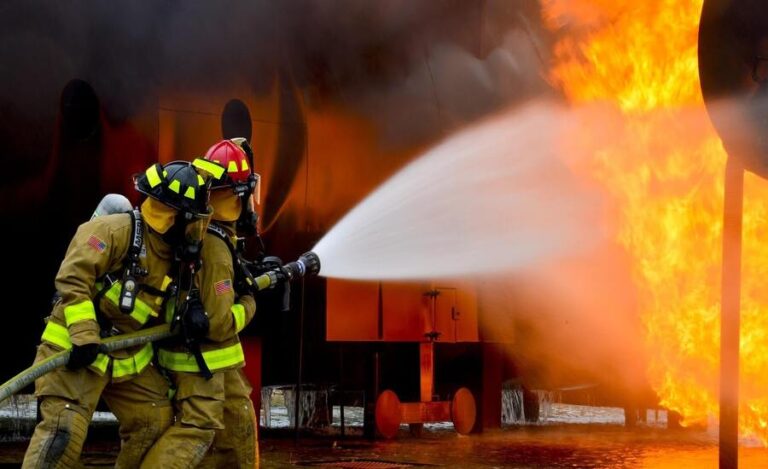When is the Best Time to Visit Everest Base Camp?
The best time to visit Everest Base Camp (EBC) depends largely on weather conditions, visibility, and trekking accessibility in the Everest region. Generally, there are two main trekking seasons that are considered optimal for visiting EBC: spring and autumn.
In spring (March to May), the weather in the Everest region begins to warm up after the winter months. The days become longer, and the temperatures at lower altitudes are mild and pleasant, ranging from around 15°C (59°F) during the day to slightly below freezing at night. This season offers clear skies, making it ideal for trekking with excellent visibility of the Himalayan peaks, including Mount Everest. The rhododendrons and other wildflowers bloom during this time, adding vibrant colors to the landscape and enhancing the trekking experience.
Autumn (late September to November) is another favored season for trekking to Everest Base Camp. After the monsoon season, the weather stabilizes, and the skies clear up, offering spectacular views of the snow-capped mountains. The temperatures are also moderate during the day, ranging from 10°C to 15°C (50°F to 59°F), while the nights can get cold, dropping below freezing at higher altitudes. The trails are dry and less muddy, providing comfortable trekking conditions.
Furthermore, both spring and autumn seasons are popular among trekkers for their favorable weather conditions, making it easier to navigate the challenging terrain and enjoy the breathtaking scenery of the Himalayas. During these times, the teahouses along the trekking route are open, offering accommodation and meals, and the local communities are welcoming to visitors.
It’s important to note that while these are the primary trekking seasons, the weather in the mountains can be unpredictable, and conditions can change rapidly. Trekkers should still be prepared for occasional rain or snow showers, especially at higher altitudes, and be flexible with their itinerary to accommodate any unforeseen weather delays.
Overall, choosing between spring and autumn depends on personal preferences, such as whether you prefer blooming landscapes and milder temperatures (spring) or clearer skies and stable weather (autumn). Regardless of the season, a trek to Everest Base Camp promises an unforgettable adventure amidst some of the world’s most awe-inspiring scenery.
January Trek to Everest Base Camp
Trekking to Everest Base Camp in January offers a unique experience characterized by quieter trails and pristine snowy landscapes. It’s one of the coldest months in the Everest region, with temperatures ranging from -15°C to -20°C (5°F to -4°F) at higher altitudes. Despite the cold, clear skies and stunning views of snow-covered peaks like Everest, Lhotse, and Nuptse await trekkers. Furthermore, the sparse vegetation enhances visibility, making it easier to appreciate the rugged beauty of the Himalayas. Teahouses along the route remain open, providing basic accommodation and hearty meals to warm up after a day of trekking. While the trek in January requires robust winter gear and careful preparation for cold weather conditions, it rewards adventurers with a serene and awe-inspiring journey through a winter wonderland.
February Trek to Everest Base Camp
February continues to offer a winter wonderland experience in the Everest region, with similar weather conditions to January. Days are cold, with temperatures ranging from -10°C to -15°C (14°F to 5°F), and nights are even colder at higher elevations. The trekking trails are less crowded, providing a peaceful and tranquil atmosphere amidst the snow-covered landscapes. Furthermore, trekkers can enjoy clear views of the Himalayan peaks against blue skies, capturing stunning photographs along the way. Teahouses remain operational, offering warm hospitality, meals, and cozy accommodations to recharge after a day of trekking. Despite the cold temperatures, February is ideal for adventurous souls seeking solitude and breathtaking scenery in one of the world’s most iconic trekking destinations.
March Trek to Everest Base Camp
March marks the onset of spring in the Everest region, bringing milder temperatures and longer daylight hours. Daytime temperatures range from 0°C to 10°C (32°F to 50°F), gradually warming up as the month progresses. The trekking trails begin to thaw, and colorful rhododendrons and other wildflowers start blooming, adding vibrant hues to the landscape. March offers clear skies and excellent visibility of the Himalayan peaks, making it a popular time for trekking to Everest Base Camp. Teahouses along the route are fully operational, providing comfortable accommodation and hearty meals. Trekkers can immerse themselves in the natural beauty of Sagarmatha National Park, visit cultural landmarks like Tengboche Monastery, and enjoy panoramic views from viewpoints like Kala Patthar. March is an ideal month for adventurers seeking a balance of scenic beauty, moderate temperatures, and fewer crowds on the trekking trails.
April Trek to Everest Base Camp
April is one of the best months to trek to Everest Base Camp, combining mild temperatures, blooming flora, and clear skies. Daytime temperatures range from 5°C to 15°C (41°F to 59°F), creating comfortable trekking conditions. The trails come alive with colorful rhododendrons, magnolias, and other wildflowers in full bloom, painting the landscape with vibrant shades.
Furthermore, Trekkers enjoy spectacular views of Mount Everest, Lhotse, and Ama Dablam against the backdrop of clear blue skies. Teahouses and lodges are fully operational, offering warm hospitality, comfortable accommodation, and a variety of meals to refuel after a day of trekking. April also presents opportunities to witness local festivals like Dumji in Namche Bazaar, providing insights into Sherpa culture and traditions. With ideal weather conditions and stunning scenery, April promises an unforgettable trekking experience in the Everest region.
May Trek to Everest Base Camp
Furthermore, may continues to offer excellent trekking conditions in the Everest region, with warmer temperatures and longer daylight hours. Daytime temperatures range from 10°C to 20°C (50°F to 68°F), creating comfortable and pleasant trekking weather. The trails are adorned with blooming wildflowers, including rhododendrons, creating a colorful tapestry against the backdrop of majestic Himalayan peaks. May offers clear skies and exceptional visibility, allowing trekkers to capture breathtaking views of Mount Everest, Lhotse, and Nuptse from various viewpoints along the route. Teahouses and lodges provide cozy accommodation, hearty meals, and warm hospitality, ensuring a comfortable stay after a day of trekking. May is an ideal month for adventurers seeking a scenic and culturally enriching journey to Everest Base Camp, immersed in the natural beauty and tranquility of the Himalayas.
June Trek to Everest Base Camp
June marks the beginning of the monsoon season in Nepal, bringing warmer temperatures and increased rainfall to the Everest region. Daytime temperatures range from 15°C to 25°C (59°F to 77°F), with occasional afternoon showers and cloudy skies. Despite the weather changes, June offers lush green landscapes and fewer trekkers on the trails, providing a quieter and more serene trekking experience. The valleys are vibrant with blooming wildflowers and lush vegetation, creating picturesque scenery amidst the towering Himalayan peaks. Trekkers should be prepared for muddy trails and occasional rain showers, requiring proper waterproof gear and trekking equipment. Teahouses along the route remain open, offering shelter, warm meals, and hospitality amidst the rainy weather. June is suitable for trekkers who enjoy the verdant beauty of the monsoon season and seek a unique perspective of the Everest region amidst quieter trails and lush landscapes.
July Trek to Everest Base Camp
Trekking to Everest Base Camp in July presents unique challenges and rewards due to the monsoon season in Nepal. July is characterized by frequent rain showers, cloudy skies, and lush green landscapes in the Everest region. Furthermore, daytime temperatures range from 15°C to 25°C (59°F to 77°F), with higher humidity levels. Despite the rainy weather, July offers quieter trails with fewer trekkers, providing a peaceful and serene trekking experience amidst the verdant scenery.
Trekkers should be prepared for muddy and slippery trails, requiring sturdy waterproof gear and trekking shoes. Teahouses along the route remain open, offering shelter, warm meals, and hospitality despite the rainy conditions. While visibility of the Himalayan peaks may be limited due to clouds, trekkers can still appreciate the lush vegetation, cascading waterfalls, and cultural insights from local communities along the way. July is suitable for adventurous trekkers seeking a unique perspective of the Everest region during the quieter monsoon season, embracing the beauty of nature in its rainy splendor.
August Trek to Everest Base Camp
August continues the monsoon season in the Everest region, characterized by frequent rain showers, cloudy skies, and lush green landscapes. Daytime temperatures range from 15°C to 25°C (59°F to 77°F), with increased humidity levels and occasional thunderstorms. Despite the rainy weather, August offers quieter trails with fewer trekkers, providing a peaceful and serene trekking experience amidst the verdant scenery. Teahouses along the route remain open, offering shelter, warm meals, and hospitality despite the rainy conditions. While visibility of the Himalayan peaks may be limited due to clouds, trekkers can still appreciate the lush vegetation, cascading waterfalls, and cultural insights from local communities along the way. August is suitable for adventurous trekkers seeking a unique perspective of the Everest region during the quieter monsoon season, embracing the beauty of nature in its rainy splendor.
September Trek to Everest Base Camp
September marks the transition from the monsoon season to autumn in the Everest region, offering clear skies, mild temperatures, and stunning mountain views. Daytime temperatures range from 10°C to 20°C (50°F to 68°F), creating comfortable trekking conditions. Furthermore, the trails are adorned with blooming wildflowers, including rhododendrons, adding vibrant colors to the landscape. September is an ideal time for trekking to Everest Base Camp, as the weather stabilizes and visibility improves, providing excellent views of Mount Everest, Lhotse, and Ama Dablam.
Teahouses and lodges along the route offer warm hospitality, comfortable accommodation, and hearty meals, ensuring a pleasant trekking experience. Trekkers can immerse themselves in the natural beauty of Sagarmatha National Park, visit cultural landmarks like Tengboche Monastery, and enjoy panoramic views from viewpoints like Kala Patthar. September combines the best of both worlds with favorable weather conditions and stunning Himalayan scenery, making it a popular month for adventurers seeking an unforgettable journey to Everest Base Camp Trek.
October Trek to Everest Base Camp
October is widely regarded as the best month for trekking to Everest Base Camp, offering stable weather, clear skies, and breathtaking mountain views. Daytime temperatures range from 5°C to 15°C (41°F to 59°F), creating comfortable trekking conditions with cool mornings and mild afternoons.
Furthermore, the trails are adorned with colorful autumn foliage, including rhododendrons and birch trees, enhancing the picturesque landscapes. October provides unparalleled views of Mount Everest, Lhotse, and Nuptse from various viewpoints along the trekking route, including the iconic Kala Patthar.
Teahouses and lodges are fully operational, offering cozy accommodation, warm meals, and hospitality amidst the scenic beauty of the Himalayas. Trekkers can also participate in local festivals like Dashain and Tihar, gaining insights into Sherpa culture and traditions. October combines favorable weather, stunning scenery, and cultural experiences, making it an ideal month for adventurers seeking a memorable trekking journey to Everest Base Camp.
November Trek to Everest Base Camp
Furthermore, November is an excellent month for trekking to Everest Base Camp, offering post-monsoon clear skies, mild temperatures, and stunning mountain vistas. Daytime temperatures range from 5°C to 15°C (41°F to 59°F), with chilly mornings and comfortable afternoons. November provides optimal visibility of Mount Everest, Lhotse, and Ama Dablam from viewpoints like Kala Patthar, ensuring breathtaking photo opportunities. Teahouses and lodges along the route offer warm hospitality, cozy accommodation, and hearty meals, enhancing the trekking experience amidst the tranquility of the Himalayas. Furthermore, trekkers can also witness local cultural festivities and ceremonies, gaining insights into Sherpa traditions and lifestyles. November combines ideal weather conditions, spectacular scenery, and cultural encounters, making it a popular choice for adventurers seeking an unforgettable journey to Everest Base Camp.
December Trek to Everest Base Camp
December offers a unique trekking experience to Everest Base Camp amidst winter conditions and festive cheer in the Everest region. Daytime temperatures range from -5°C to 10°C (23°F to 50°F), with cold mornings and chilly afternoons at higher altitudes. Despite colder temperatures, clear skies provide excellent visibility of Mount Everest and surrounding peaks, offering stunning panoramic views.
Teahouses and lodges continue to provide warm hospitality, comfortable accommodation, and hearty meals, ensuring a cozy retreat after a day of trekking in the crisp mountain air. December allows trekkers to experience the quiet beauty of the Everest region with fewer crowds on the trails, offering a peaceful and reflective journey amidst the natural wonders of Sagarmatha National Park. Adventurers can immerse themselves in the winter charm and tranquility of the Himalayas, making December an enchanting time for trekking to Everest Base Camp.
Some Tips for Your Upcoming Trek to Everest Base Camp
- Prepare Physically and Mentally: Train for cardiovascular endurance and strength before your trek. Mental preparedness is crucial for overcoming challenges and enjoying the journey.
- Pack Light: Carry essentials like sturdy trekking boots, layered clothing for varying temperatures, a down jacket, and personal items. Minimize unnecessary items to reduce the weight of your backpack.
- Stay Hydrated and Eat Well: Drink plenty of water and stay hydrated throughout the trek. Eat balanced meals, including carbohydrates for energy and protein for muscle recovery.
- Acclimatize Properly: Ascend gradually to higher altitudes, allowing time for your body to adjust and prevent altitude sickness. Follow recommended acclimatization guidelines and listen to your body’s signals.
- Respect Local Culture: Embrace the Sherpa culture with respect and appreciation. Learn basic Nepali phrases and customs to engage respectfully with locals.
Some Most Popular Treks
- Everest Base Camp Trek: A classic trek to the base camp of the world’s highest peak, offering stunning Himalayan views and cultural immersion.
- Annapurna Circuit: A challenging trek through diverse landscapes, including lush forests, arid valleys, and high mountain passes.
- Langtang Valley Trek: Close to Kathmandu, this trek offers panoramic views of Langtang Lirung and opportunities to explore Tibetan-influenced villages.
- Manaslu Circuit Trek: A remote and less frequented trek around Manaslu, offering pristine mountain scenery and cultural encounters.
- Upper Mustang Trek: Known for its arid landscapes, Tibetan Buddhist culture, and ancient monasteries in the remote Mustang region.
Each trek in Nepal offers its unique charms and challenges, catering to trekkers of various preferences and abilities, ensuring an unforgettable adventure amidst the Himalayan splendor.






